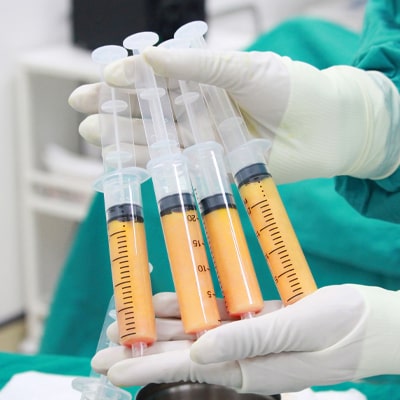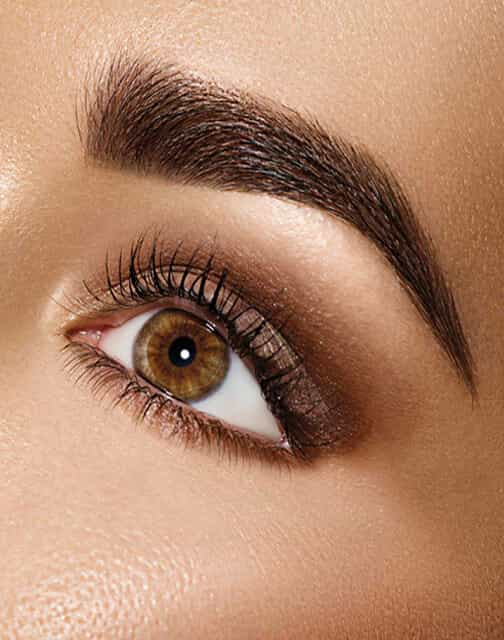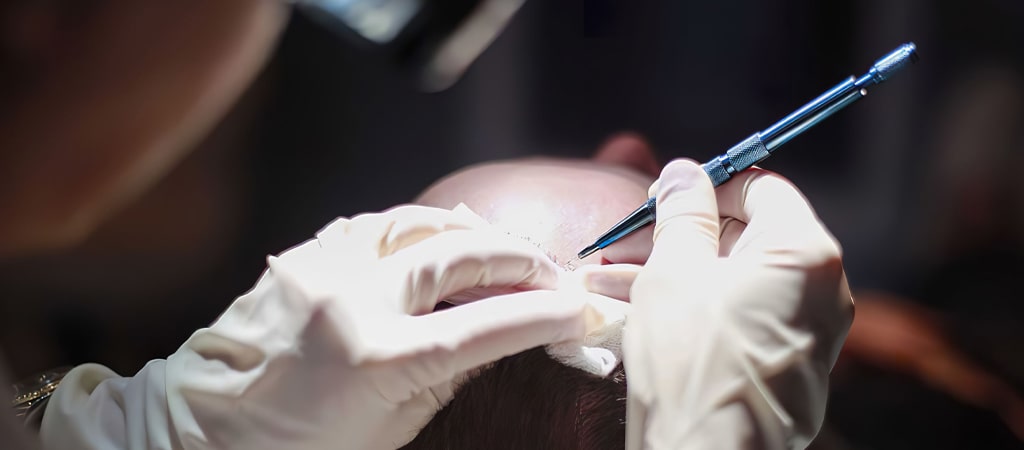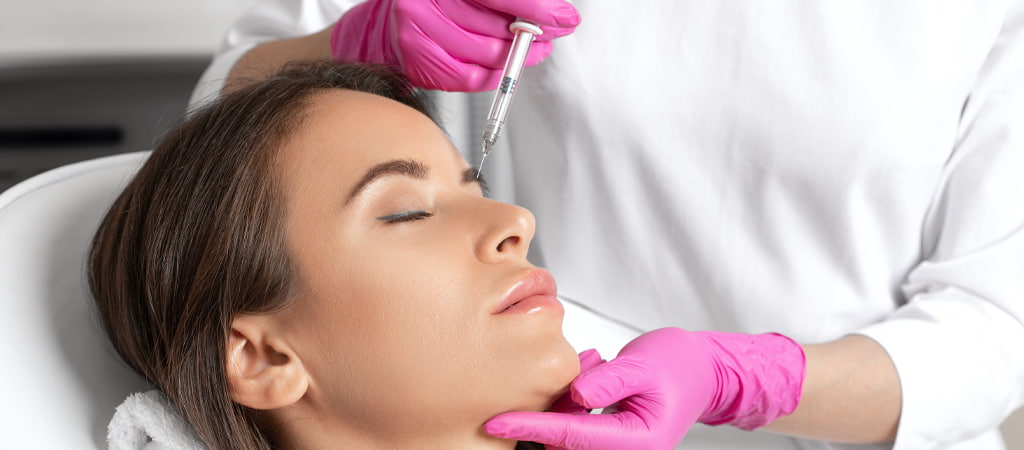What Is Fat Filling (Lipofilling)?

Lipofilling also known as Fat Fillers, is a procedure where fat is injected into areas on the face and body where sagging, volume loss as a result of aging, and wrinkles have occured. Fat fillers are also used to correct previous liposuction errors, deformities and hip shaping.

How Is Lipofilling Performed?
Lipofilling is usually performed under local anesthetic (general anesthesia may also be preferred depending on the patient’s condition).
The fat is taken with a syringe and cannula (blunt needle) via a liposuction method, and injected into the relevant area through the centrifugation process called washing (purification). The transferred fats have a stem cell effect that rejuvenates and revitalizes the skin. As no incision is made in the area during the application it leaves no scars making it a natural and effective method. The techniques used vary as fat fillers, vaser lipo, laser lipolysis, and liposuction.
Which Parts Of The Body Is A Fat Filler Performed?
Fat injections are used in many parts of the body including the face.
- Cheekbones
- Forehead
- Upper lip line
- Tip of the chin
- Nasolabial area (lip edge filling)
- Hands
- Breast augmentation
- Buttock augmentation – BBL
- Bow leg
are the areas in which the application can be performed.
”In fat injection treatments close to the skin surface, a tonal difference can be seen in the treated area and it is very difficult to correct. For this reason, continuous procedures close to the skin surface should be avoided. The experience of the physician performing the operation is very important”
Facial Fat Fillers
Over time fat volume in the face decreases as a result of aging. With the loss of the facial sub-tissue fat layer, sagging starts to show, lines and wrinkles become prominent, skin dullness is noticeable, creating a much older appearance. The way to reverse the signs of aging is to replace the fat loss and restore volume to create a plumpness in the face. Facial lipofilling is a procedure performed using the patient’s own fat and is the most common fat transfer procedure.
Lipofilling is applied to the following areas;
- Temple area
- Cheek area
- Nasolabial area
- Mimic lines between the eyebrows
- Lines above the lip
- Forehead area, forehead mimic lines
- Jaw line
Is Lipofilling A Permanent Method?
The overall success rate of the fat fillers is quite high and is a frequently used method today. After the procedure, a small portion of the transferred fat cells may melt. The rate at which the fat cells remain viable depends on different factors including the surgical materials used, the way the fat is transferred and the technique of the specialist.
Some of the transferred fat may not remain permanent after about 6 months, in such cases, the procedure may need to be repeated. The need for a second session is more likely in areas that have consistent active movement, like the legs. But in areas that do not require a lot of movement, like the cheeks, a single session should be enough.
Who Can Lipofiller Be Applied To?
A lipofiller can be an option for aesthetic purposes or performed after a physical trauma. Individuals who do not have any restraints with surgery and the fat from the body can be removed, may be eligible for a lipofiller procedure. Fat injection application is an extremely comfortable application.
How Long Does A Lipofiller Procedure Take?
A lipofiller is performed under general and local anesthesia, depending on the preference of the patient and the surgeon. Local anesthesia is sufficient for the face and hands, however, for areas such as the buttocks, legs, breasts, hips, general anesthesia is more appropriate as the amount of fat to be applied to these areas is quite high.
What Are The Advantages Of A Lipofiller?
Firstly, the procedure has no side effects. The fat cells to be transferred are taken from the patient and most of them are permanent. The procedure can be repeated when necessary, and lasts longer with every repetition. Patients can return to their daily routine after the procedure.
Recovery Process After A Lipofiller Procedure
Blood thinners such as aspirin should not be used before the operation. If patients are currently taking medication, these should be shared and discussed with the doctor.
As a fat filler procedure is a surgical operation, there are some low risks involved.
Swelling, bruising and edema are normal effects after the procedure. The physician will also apply antibiotic treatment against possible infections. Ice can be applied to the swelling which will start to decrease over time. The period varies based on where the treatment was applied. Light massage of the area a few days after ice application contributes to healing. Approximately 10 days after the surgery, swelling in the area of treatment goes down and the area takes its final shape.
Hot showers and steam should be avoided for a while after the procedure..
Healing time varies according to the areas where the fat will be extracted and injected. The injection area heals in about 7 days.
Patients can shower 48 hours after the operation.
The corset provided after the operation must be worn.
Patients can expect to return to work and social activities approximately 7 days after the operation.
Strenuous sports and activities should be avoided for 2 months after the procedure.
Smoking and alcohol should be avoided for a healthy healing process. High importance should be given to nutrition procedures and water intake should be increased.
Lipofillers FAQs
Where is the fat used for lipofilling taken from?
Where is the fat used for lipofilling taken from?
The area where the fat taken from the body is taken from is determined by the physician during the consultation. However, it is generally taken from the belly, inner thigh, buttocks, back and upper arm areas.
Is a lipofiller procedure permanent?
Is a lipofiller procedure permanent?
A fat filler procedure is a permanent method in the long term. With the developing technology, the success rate is increasing day by day. The permanence of fat fillers also varies according to the area where the fat is injected. While it melts faster in active areas such as arms, legs and buttocks, it lasts longer in areas where there is less movement such as the face and breasts.
Lipofillers or fillers?
Lipofillers or fillers?
Both methods are widely used and quite successful. The method to be used is decided by the physician after an evaluation of the area to be treated.
Can a lipofiller be applied in the under-eye area?
Can a lipofiller be applied in the under-eye area?
In some cases, lipofillers can be applied under the under-eye area, however the first preferred option to treat this area is under-eye light filling.
Is a lipofiller harmful?
Is a lipofiller harmful?
Since the person's own fat tissue is used in the fat filler, it is a completely harmless and natural application.
When does a lipofiller heal?
When does a lipofiller heal?
Although the recovery time varies from person to person, patients can expect to return to daily life after about a week.
How does swelling go away after a lipofilling?
How does swelling go away after a lipofilling?
Ice application in the first few hours after a lipofiller procedure relaxes the relevant area and reduces edema. Swelling heals completely between 10-15 days. However, it takes approximately 8 weeks for the area to fully recover and show its final form after the operation.





